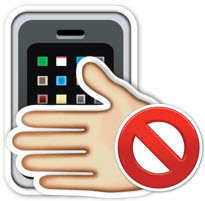A new distracted driving law is now in force in Washington State, and it’s all a little complicated, with a distinction between primary and secondary offenses. Basically, manual cell phone use is banned, but eating or drinking (water, not beer!) in a safe manner is still OK. I found this set of Q&A’s from the Seattle Times helpful.
Q. What is banned?
 The law forbids handheld uses of devices. Not just phone calls, but composing or reading any kind of message, social media post, photograph or data.
The law forbids handheld uses of devices. Not just phone calls, but composing or reading any kind of message, social media post, photograph or data.
Drivers may not use handheld devices while at a stop sign or red-light signal.
All video watching is illegal, even in a dashboard or dash-mounted device.
Q. What’s legal?
Common built-in electronics, including hands-free phones, satellite music and maps, are legal.
Drivers may even turn on a smartphone that’s mounted in a dashboard cradle, for limited purposes such as navigation apps, a voice-activated call, or music streaming. The new law allows the “minimal use of a finger.”
Handheld phone calls to 911 or other emergency services are legal, as are urgent calls between transit employees and dispatchers. Amateur radio equipment and citizens-band radio remain legal.
To legally use a handheld device for non-emergencies, the driver must pull away from traffic lanes, to where the vehicle “can safely remain stationary.”
Q. What does “minimal use of a finger” mean?
Police will use their judgment. State Patrol Trooper Rick Johnson, a spokesman based in Bellevue, sees it this way: “The idea is for you to activate your phone with one touch, so you don’t have to look away from your windshield to dial 10 numbers, to make a phone call.” Typing a map address while in traffic, now common behavior, will be treated by many troopers as a violation, he said.
Q. Is driving under the influence of electronics (DUI-E) a primary offense?
Yes. A police officer can pull someone over, merely based on seeing a motorist use a handheld device, type, or watch video.
Q. How much does a ticket cost?
The fine is $136 for the first offense. For additional violations within five years, the fine increases to $234 per citation.
Q. Will a ticket raise my insurance rates?
Probably, if you‘ve been found guilty of other traffic violations.
Distracted-driving citations will be reported in state driving records, unlike the previous law. Insurance companies will track them.
Q. What about other distractions?
 Miscellaneous distractions such as grooming or eating are a secondary offense, meaning a ticket may be issued if a law-enforcement officer pulls you over for some other offense, such as speeding or a dangerous lane change.
Miscellaneous distractions such as grooming or eating are a secondary offense, meaning a ticket may be issued if a law-enforcement officer pulls you over for some other offense, such as speeding or a dangerous lane change.
The standard fine is $99 — which is more than the $30 mentioned in the legislation, and past news reports. The higher total, like the electronic-distraction penalty, includes fees for state government and trauma care.
“Embracing another while driving” has been illegal since 1927. If a cop sees your arm around someone so both hands can’t reach the wheel, that’s a reckless-driving offense.
Q. I raise my cellphone near my hearing aid. Is that OK?
This was legal under an exemption in the 2007 distraction law — which the new law has eliminated. Bluetooth devices have been developed for hearing-impaired people, while the Washington Traffic Safety Commission sought fewer exceptions, so police can effectively apply DUI-E rules. “There is no right to use a phone while driving,” said Shelly Baldwin, WTSC government liaison.
Q. Is the law really enforceable?
Washington state is home to 5.7 million licensed drivers and 165 million miles of travel miles daily. Roadway observations find 10 percent of drivers on the road are handling a phone. There’s no way for police to watch everyone.
Early this year, as few as a half-dozen State Patrol troopers covered some shifts in the entire Eastside detachment, from the floating bridges to Snoqualmie Pass. Statewide there were 89 vacancies of 671 trooper positions, though that should improve with two academy classes and pay raises this year.
Seattle’s traffic division of 58 officers already can’t meet public demand to clear gridlocked intersections and bus lanes, or enforce 20-mph school zones, or maintain bikeways or sidewalks.
So cultural change is required, plus technology to replaceor block hazardous behavior. Sponsors point to Washington’s 95 percent seat-belt use rate as hope smartphone laws can take root.
